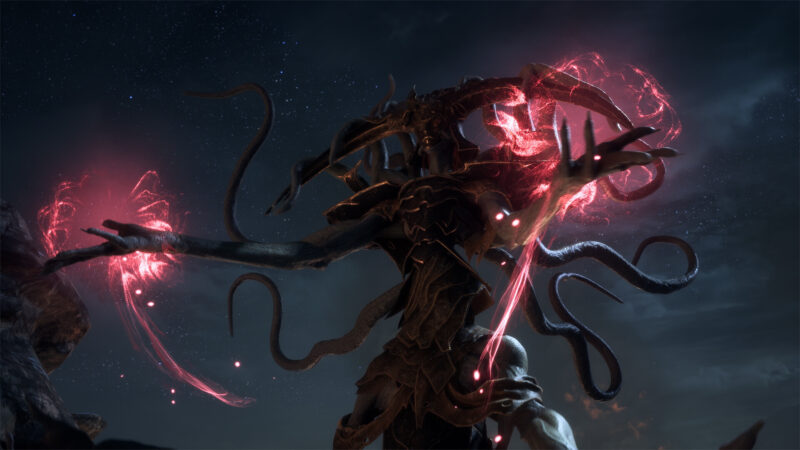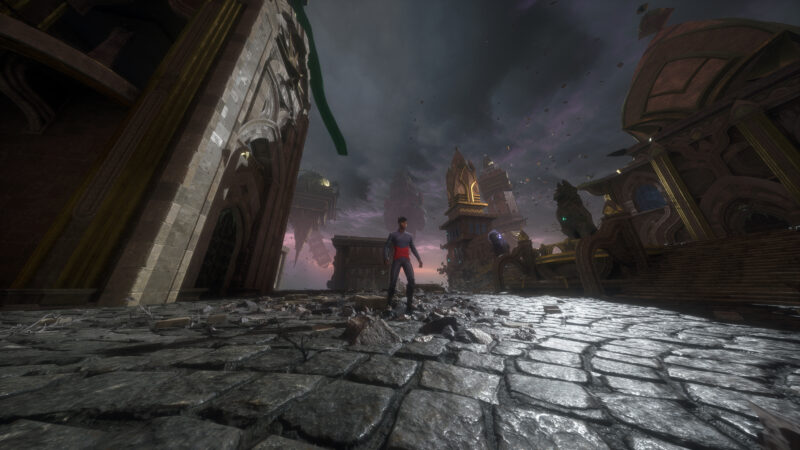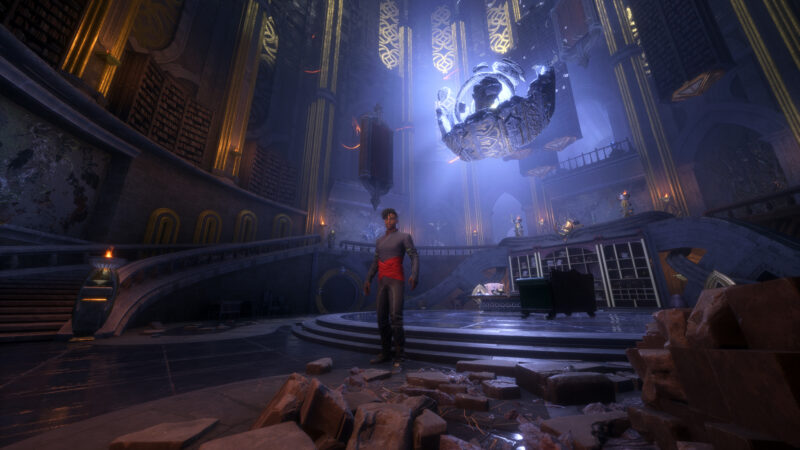Start out on your journey into Thedas on the right foot with our 10 Tips for Beginners in Dragon Age: The Veilguard!
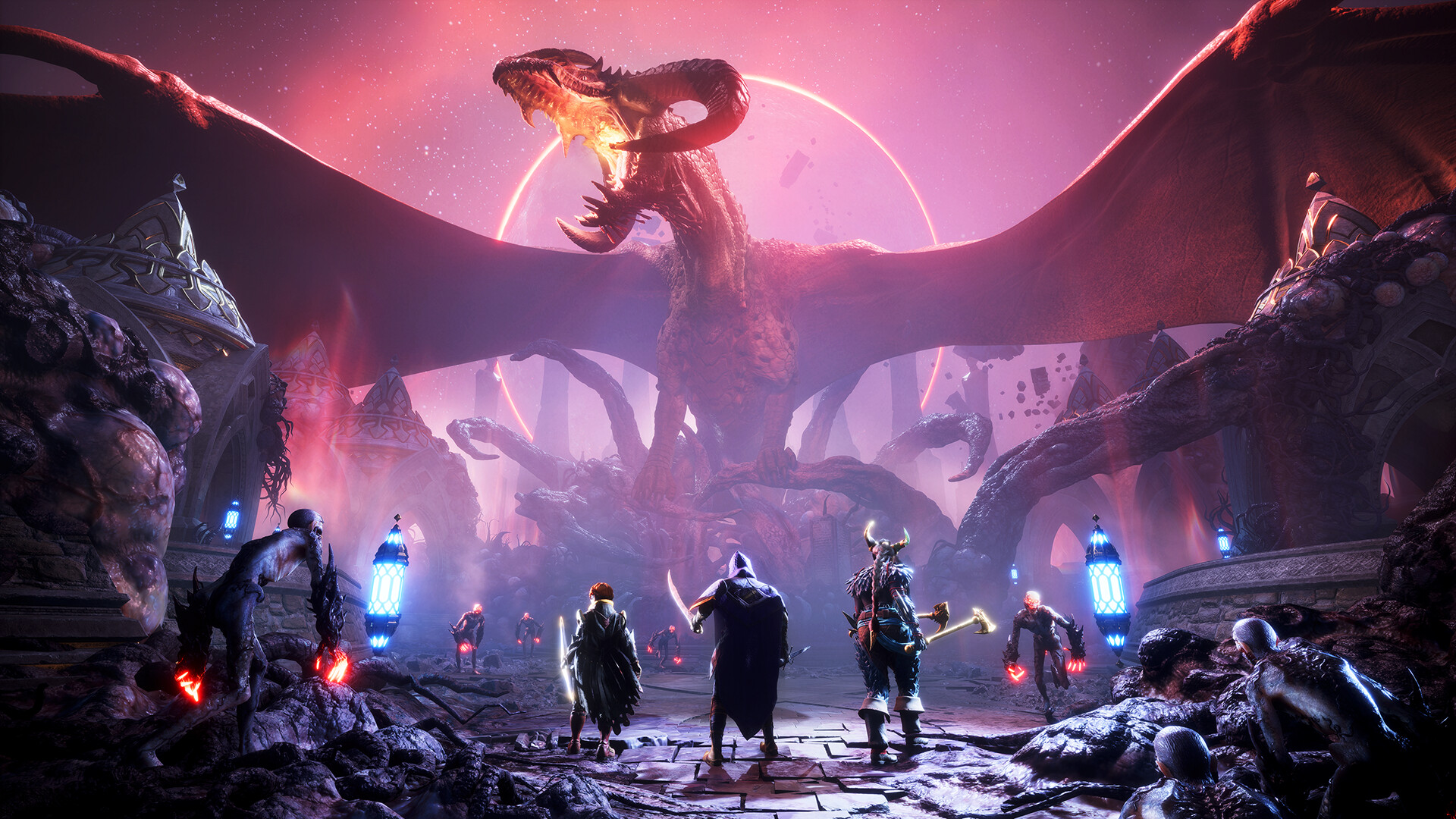
Dragon Age: The Veilguard is the fourth major entry into the popular, fantasy-based Dragon Age series from developer BioWare. Set to release on October 31, 2024, the game will take place 10 years after the events of the third game, Dragon Age: Inquisition. The Dragon Age series is known for its robust storytelling based on player choices, intriguing companions and possible romances, tactical combat, and more. After so many games and additional spin-off media expansions, the game’s lore has become very deep and complex.
Players who haven’t been keeping up with every entry into the series may be wondering if The Veilguard would be a good place to jump back in. Developers have assured fans that the story and game can be enjoyed by new and old players alike. However, there is still a lot of complexity to parse through and that’s we’re we can help! The following article will cover tips about classes, factions, race, companions, combat, skill trees, the lore and more in our Dragon Age The Veilguard: 10 Tips for Beginners guide.
10 Tips for Beginners Playing Dragon Age: The Veilguard
Are you stepping back into Thedas after a long absence or thinking about joining the series brand new? Either way, these tips for beginners will help you get your journey started right. If The Veilguard is anything like previous entries, your choices will have a strong impact on how much you enjoy the game and interact with the story.
Our top 10 tips for beginners who want to play Dragon Age: The Veilguard are:
- Class Determines Playstyle – There are three main classes, each with distinct playstyles.
- Faction Choice Influences Build – Factions are more than just character backgrounds or a roleplaying choice.
- Race Influences Dialogue and Choices – Your choice of race won’t impact your build but can influence the story.
- Gather Companions for a Balanced Party – Like other Dragon Age games, there are several companions to recruit.
- Action-Based Combat – Combat is primarily action-based, with fights happening in real-time.
- Tactical Mode and Combos – However, the combat can be paused to give you time for tactical strategies and combos.
- Skill Tree and Specializations – Each class has its own skill tree, as well as three possible class specializations within.
- Romancing Companions – As in previous games, you can romance companions and your choice will impact the story.
- Crucial Choices in Previous Games – You won’t need a previous game save to input pivotal decisions.
- Brush Up on the Lore – You don’t need to play all three games, but knowing some of the lore will enhance your experience.
1. Class Determines Playstyle

Your choice of class in Dragon Age: The Veilguard will be the most important decision you make and heavily influence your experience of the game. There are only three classes in DA:V, each with a distinct style of combat and role within the group.
The Warrior specializes in close-quarters combat. They are the tank, holding aggro on strong enemies and cutting down aggressive mobs on the frontlines. They typically fight with either sword and shield or large two-handed weapons. Rogues are nimble assassins that use their speed to deal burst damage with daggers or stay at range and attack with bows. They typically wear medium armor and have less health and stamina than a tank. Finally, there are the Mages, who cast powerful magic spells at range. Aside from dealing damage they usually offer a lot of utility, casting debuff spells or healing allies. They have very little physical protection, however, and can be very vulnerable to melee attacks.
These three classes are standard to the Dragon Age series and returning players should be familiar with the archetypes. Incoming players will want to think carefully about which playstyle they like best.
2. Faction Choice Influences Build

Factions in previous Dragon Age games have traditionally been a roleplay flavor that was tied to your choice of race in the character creator. Mostly it influenced your character background and sometimes dialogue options. However in Dragon Age: The Veilguard factions will now be a separate choice that establishes your character’s background, and how you came to be drawn into the main story conflict.
Furthermore, Dragon Age: The Veilguard will also offer a new, unique twist on these faction choices. Factions will be associated with skill specializations, or ‘subclasses’ that you can unlock with skill points. While you are not restricted to only specializations based on your faction choice, combining the two can make for a powerful build and roleplay combination.
Finally, your alignment with your chosen faction will also grant you three unique buffs. The first one buffs your ability to gain reputation with your chosen faction. The second two buffs are specific to each faction but can include utility buffs like the ability to carry an extra potion. Additionally, there can also be small combat bonuses such as increased damage against a certain type of enemy.
3. Race Influences Dialogue and Choices
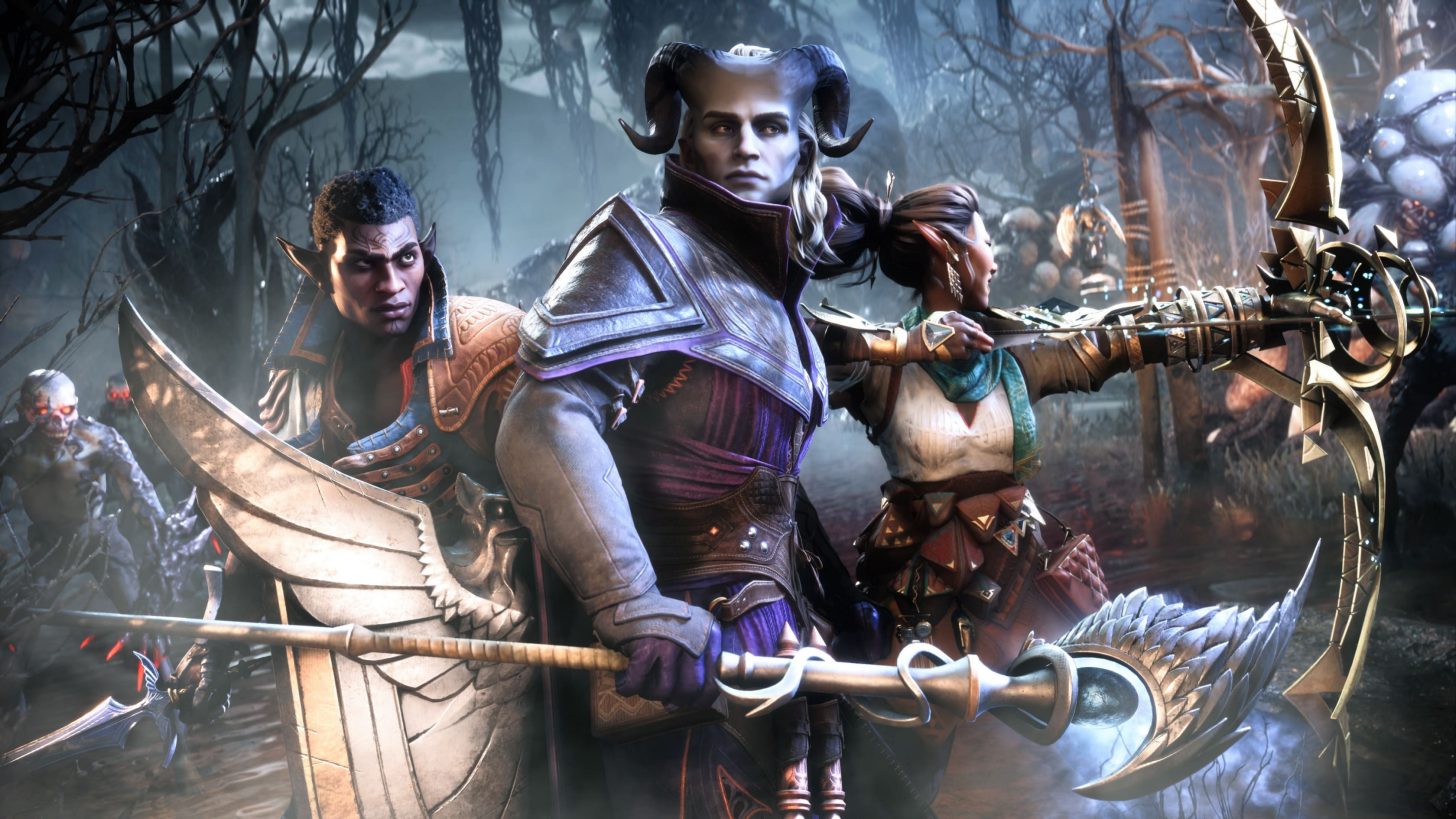
There will be four playable races in Dragon Age: The Veilguard, including Humans, Elves, Dwarves, and Qunari. Humans are the most numerous and versatile race in Thedas, while Elves often have strong ties to the fade and make good Mages or Rogues. Dwarves cannot use magic at all and therefore are a race that is especially gifted at physical combat. Finally, the Qunari are another physically gifted race with their large stature and powerful physique. However, unlike the dwarves, they are also capable of magic, although they view mages as dangerous and treat their own as leashed attack dogs.
In previous Dragon Age titles, your choice of race has also been tied to certain stat bonuses. The first game in the series gave several stat bonuses across the board to each race. Follow-up games streamlined this quite a bit, with each race getting one single type of stat bonus.
So far, in gameplay and character creator previews it does not appear that races will give you any type of stat bonus in Dragon Age: The Veilguard. Therefore, choose whichever race you like the look of best, fits with your chosen class, or that you are most interested in the lore of. Race choice in DA:V looks like it will be restricted to influencing dialogue choices and roleplay, rather than builds.
4. Gather Companions for a Balanced Party
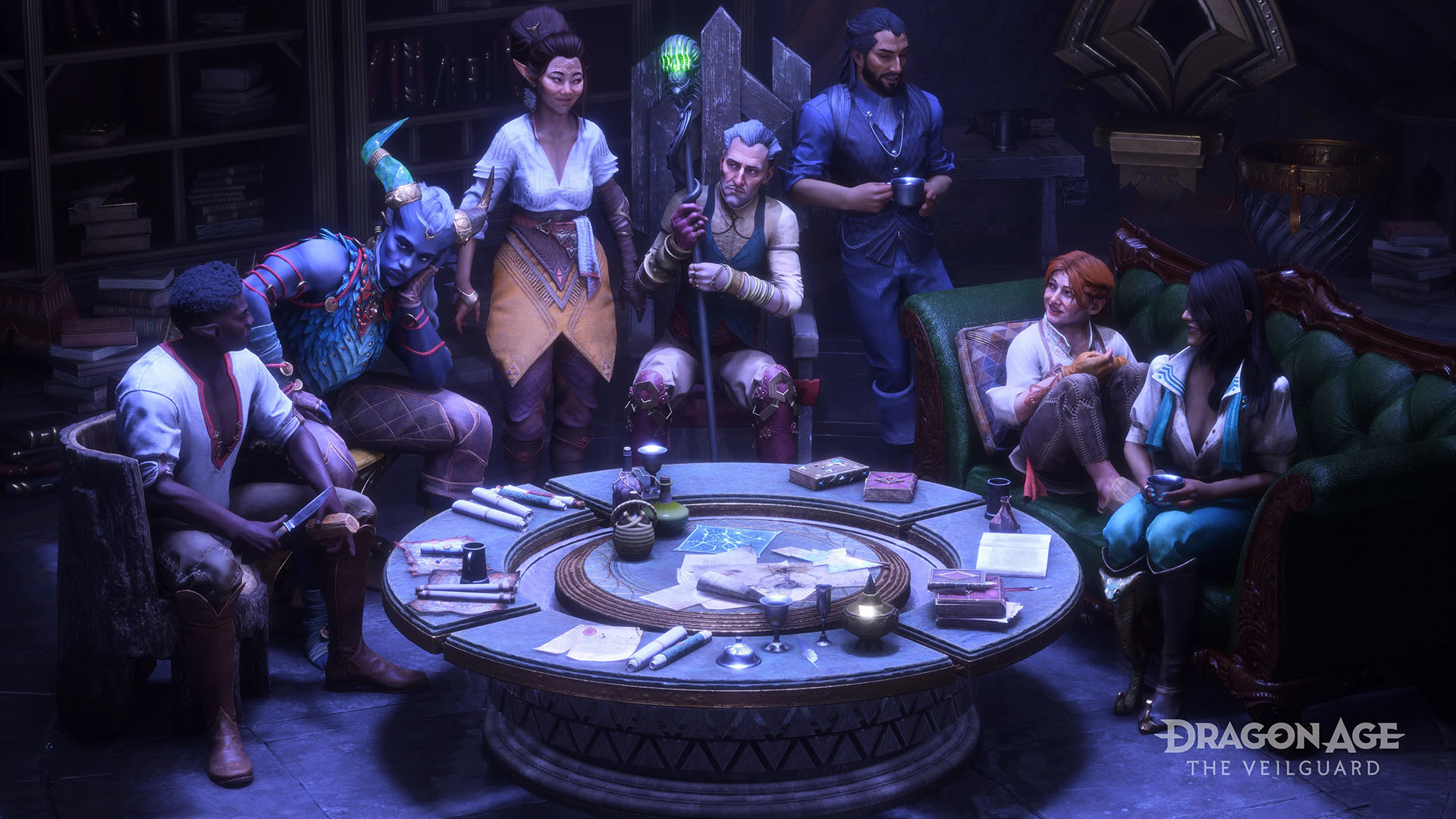
Companions and their relationships with you and each other have been what made the Dragon Age series really shine. In Dragon Age: The Veilguard, you will be able to gather seven total companions: Bellara, Davrin, Emmrich Volkarin, Lace Harding, Lucanis Dellamorte, Neve Gallus, and Taash. Each will have their own combination of race, class, specialization, and faction alliance. Once everyone has joined you, you will have a group of two Warriors, two Rogues, and three Mages to choose from. Your adventuring party in DA:V will be smaller than in previous titles. Only two companions will be able to accompany you at a time.
Therefore, it will be crucial to have a balanced party when you travel. If your custom character is a sword and shield warrior, then you are likely to want one Mage and Rogue to back you up. The game does allows for you to take out three Warriors at a time. However, your physically strong team will be seriously lacking in group utility and ranged attack. Strategy will certainly shift, depending on the next enemy or boss you are facing. But your companions will be crucial to both gameplay and combat, as well as the advancing story.
5. Action-Based Combat

Dragon Age: The Veilguard’s combat will be sustainably different from previous titles, and has a foundation of action-based combat. For returning players who like the turn-based combat of the original game, this change may be an adjustment. BioWare appears to have attempted to blend the best parts from the Mass Effect series and Dragon Age into a much faster-paced, action-oriented combat system.
The basic UI of combat is very streamlined, with only three main skills showing at the bottom center of the screen. You’ll also have access to potions with an assigned keybind, along with the standard attack button. Furthermore, below your skills will be an energy resource bar, which is called something different for each class. Warriors gather Rage in combat, which can be spent to use abilities after the bar is filled up.
Finally, another nice addition to the combat gameplay with Dragon Age: The Veilguard will be the ability to swap weapons during combat. For example, Warriors can swap between a sword and shield and a two-handed weapon. This would allow them to play as a tank when strong defense is needed. Then, pull out a greatsword for high damage after staggering an enemy. Rogues and Mages will also be capable of swapping, allowing your team to respond to combat situations dynamically on the fly.
6. Tactical Mode and Combos

Tactical mode in Dragon Age: The Veilguard is where combat starts to get more complex and interesting. At any time during combat, you will be able to pause the action and enter into a tactical mode screen. This screen will include all of your available abilities, as well as the abilities of your two companions. Unfortunately, in DA:V you will no longer be able to select one of your companions, ‘take them over’ and play as them or give them specific commands. This limitation is likely to be a disappointment to fans of the series and is a major change to combat.
However, the developers at BioWare have added a new combo ability mechanic as a way to help make you and your companions feel like a team. Within this combo system, you can combine multiple abilities and status effects to produce additional combat amplifications. For example, the skill Shred inflicts the Sundered condition. Once any enemy is Sundered, you can then combo with a companion’s ability that takes advantage of the debuff. Thus, selecting skills that both prime (start a combo) and detonate (finish a combo) will be critical to performance in combat.
7. Skill Tree and Specializations

The Skill Tree and Skill Specializations found in Dragon Age: The Veilguard will be vital assets to your build and character progression. The game will have a max level of 50. Therefore, you will be limited to a maximum number of 50 skill points to apply to your build.
Within the Skill Tree, each class will have three unique Specializations, requiring players to invest skill points to travel along a web of active skills and passives. This honeycomb and pathing system starts with a strong middle section that contains all of your foundational skills. Diamond shape skills are abilities that you can slot (up to three). Large circles are class skills, medium circles are passives and ability upgrades, and small hexagons are traits. Lastly, small circles present passives and stat boosts.
Furthermore, as you get more advanced in the game skills and specializations are likely to play a bigger role when you’re strategizing for difficult fights and putting together the most effective party.
8. Romancing Companions

Since the original Dragon Age: Origins, the franchise has always included romantic relationships as an important part of the player’s personal story. Each game provided opportunities for players to develop romantic relationships with their companions, adding depth and personal stakes to the narrative. Moreover, these romances are influenced by your choices, dialogue interactions, and the progression of the main plot.
In Dragon Age: The Veilguard, all seven companions are romanceable, regardless of your choices in character creation. This approach is a first for the series, allowing any protagonist to romance any companion. Furthermore, this time the companions aren’t only interested in you or nothing! Instead, they have been given some agency, and if you do not instigate a relationship, then some may develop feelings for another companion.
9. Crucial Choices in Previous Games
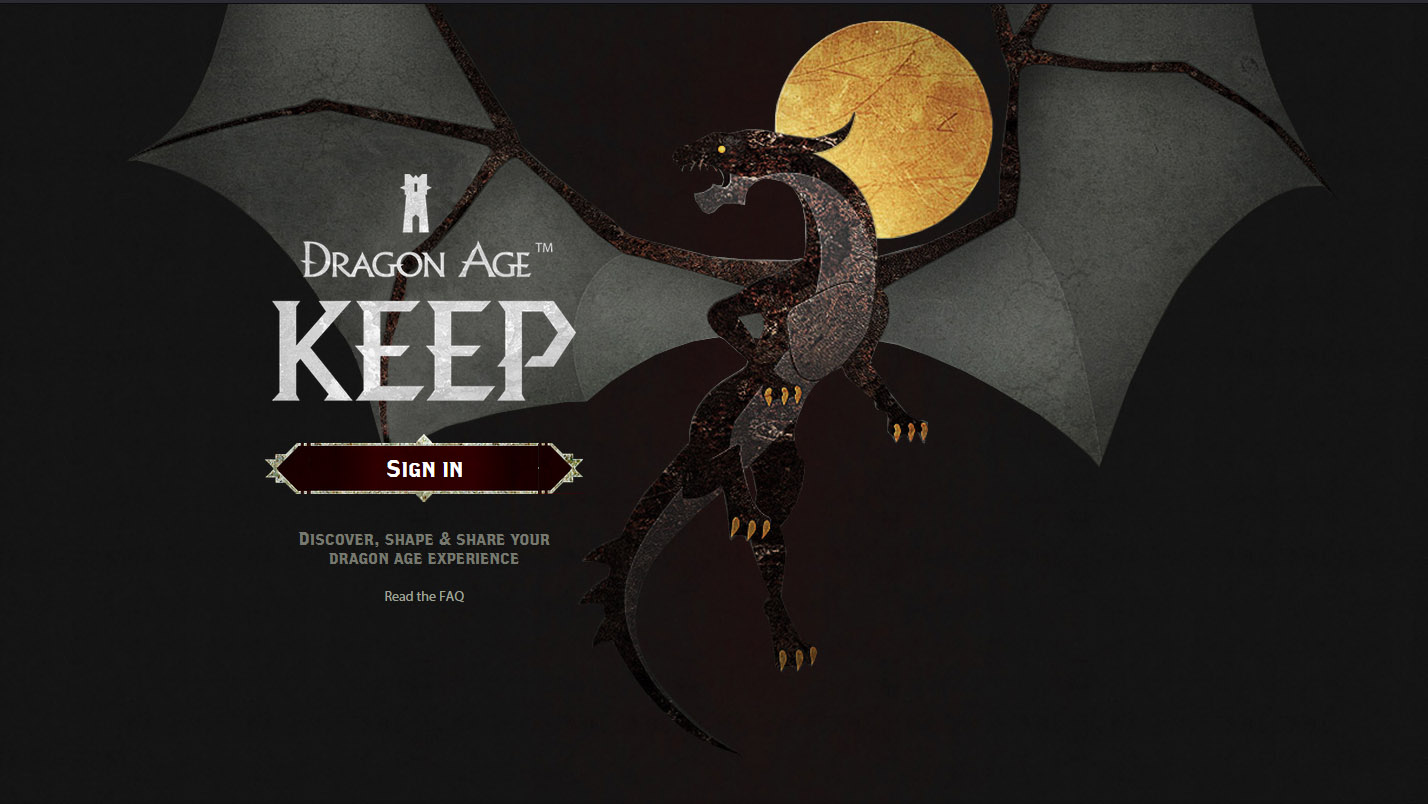
Another striking feature of the Dragon Age franchise is the power given to players to make choices throughout the story that can significantly impact how the world looks at the end of the game. Two different players of Dragon Age: Origins can have wildly different endings. Possible scenarios include where the player character lives, dies, or even has a child. These types of games can be difficult when sequels are created because all players have to start again from the same point.
In response, BioWare developed a way for players to import a save from their old game into the new. All crucial decisions made in the previous game can carry over and the game can account for the differences. For the third game, Dragon Age: Inquisition, the developers made Dragon Age Keep. This is a free online application players can use to import their choices from DA2 into Inquisition.
However, the technical requirements for directly importing a save from a game from a previous generation are now too high. Instead, BioWare has confirmed that players will be able to remake those choices through a tarot card system during character creation. This will give old players a refresher on the story from previous games. Additionally, it can also serve as a way to introduce new players to the world.
10. Brush Up on the Lore

The lore and the story of the Dragon Age franchise that has grown since the release of Origins is grand but dense. Consequently, new players may be asking if it’s too late to get into. Is the fourth game of a franchise a good place to jump in? Furthermore, even if you’ve played the previous games, maybe it’s been a while and the story details aren’t clear anymore.
The developers at BioWare have insisted that you don’t need to have played a Dragon Age game before to be able to enjoy this new one. Moreover, the addition of the tarot card system should help alleviate the feeling of being lost. However, it is likely that some emotional moments with returning characters will not hit as hard for those who aren’t familiar with them.
With the release date fast approaching, the time to play through the previous games is short. Another option for DA players, or those who don’t mind spoilers, is the Dragon Age Wiki. This fansite is a good place to get a refresher on, or introduction to, the story from all three games. Furthermore, it will give you an idea of the crucial decisions and how they impacted the world. This will help make it much easier for you to understand and pick up the story of Dragon Age: The Veilguard.
Looking For More?
Thank you for reading the Dragon Age The Veilguard: 10 Tips for Beginners guide. We provide the latest news and create guides for Baldur’s Gate 3, Fallout 4, ARK Survival Ascended, and more. Also, watch me play games on Twitch or visit my YouTube channel!
 Reddit
Reddit
 Email
Email
